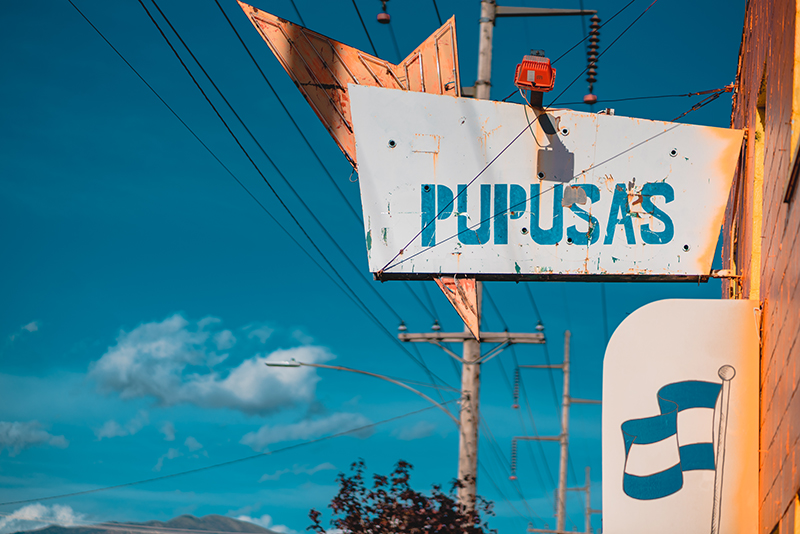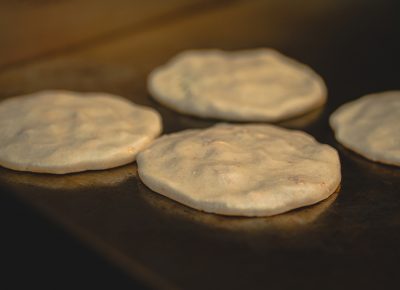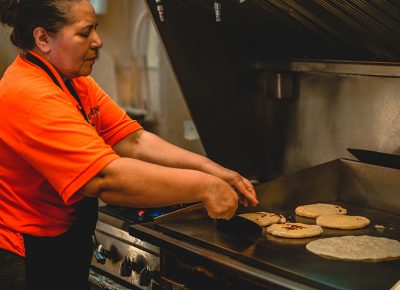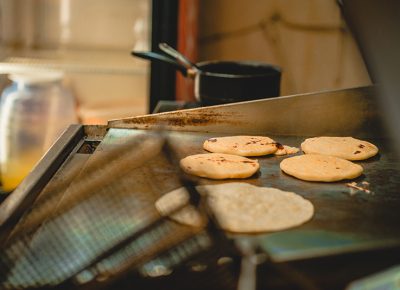Pupusas Piled High: El Viroleño
Food Reviews
El Viroleño
471 W. 800 South, Salt Lake City || 801.595.7021
Monday–Thursday: 11 a.m.–10 p.m.
Friday–Sunday: 9:30 a.m.–10 p.m.
I will be the first to admit that I have never really explored Central American food. My exposure has mostly been limited to the occasional plate from a multicultural festival pop-up restaurant. I knew that I needed to dig deeper, but I had no idea where to even begin. When I heard that there was a traditional Salvadoran restaurant along the 8th South corridor, I jumped at the chance to take a closer look.
El Viroleño is housed on the bottom floor of a two-story, brightly-painted orange building. It is difficult to drive past without noticing. The sign out front and the lettering on the sides of the building all boast of the restaurant’s pupusas. As pupusas are considered by many to be the national dish of El Salvador, I knew that this was where I needed to start. From the menu description, I was expecting an empanada-like hand pie, but what came from the kitchen shot past my expectations.
Pupusas & Appetizers
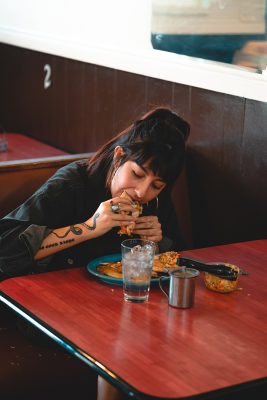
First off, the pupusas are huge. Each one filled an entire medium sized plate. For the uninitiated, as I was, pupusas are at least a little similar to quesadillas in their construction – the main difference is that the filling is stuffed into a piece of corn tortilla dough before it is flattened out and cooked. The restaurant offers five different pupusa fillings. We tried three: the Revuelta, the Locro con Queso, and the Chicharrón. They are all are served with a vinegary cabbage slaw condiment and a jar of spicy tomato sauce. The Chicharrón—filled with a mixture of cheese and shredded pork—was our favorite. It is hard to go wrong with slow-cooked pork. The flavorful juices of the filling added depth to the entire dish and went surprisingly well with the crunch of the cabbage. The Locro (edible flower) con Queso paired cheese with a broccoli-like Salvadoran vegetable (the locro), and the Revuelta mixed in a bit of everything. The restaurant also offers a straight bean-and-cheese or simple cheese option for those wanting something a little less intense. They were all unbelievably sumptuous and filling, and a steal at $3 or less apiece.
Wanting to see how familiar items would come out when given a Salvadoran twist, we ordered a pair of tamales. The Tamales de Cerdo o Pollo ($2.35) differ from other tamales that I’ve tried—they are steamed in a banana-leaf wrapper and not in one made from corn husks. Also, the chicken or pork filling is mixed with peppers and potato wedges. We were encouraged to use the same condiments from the pupusas with the tamales, and that it worked incredibly well. The ratio of filling to masa breading was perfect, and the added freshness and spice of the toppings cut some of the richness of the dish. It was great seeing something familiar to most of us completely reimagined. Even the pickiest of eaters in our dining party loved the tamales.
Entrées
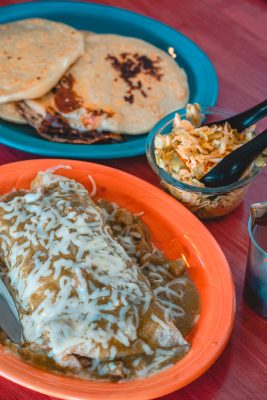
Rounding out a meal that had thus far been made up of tempting appetizers, we ordered two entrées: the Chile Relleno Plate ($9.95) and the Carne Asada Plate ($10.70). Both were served on a plate of rice and refried beans with two thick tortillas. The chile relleno was similar to what I have ordered from Mexican restaurants, consisting of a cheese-stuffed poblano pepper rolled in an egg batter and fried. Where this one differed was that diners could order the relleno with a ground beef or a chicken filling. They were out of the ground beef mixture the day we were there, so we gave the chicken chile relleno a try. I’m glad we did. The tart pepper casing was a good match for the flavor of the chicken, and the spicy tomato smother gave it just the right kick. The carne asada was presented in much the same way—on a bed of refried beans and rice with a pair of tortillas. The marinated flank steak was butterfly cut to make it extra thin, and pan-seared to perfection. The thick Salvadoran tortillas—almost pancake-like in their girth—were consumed, in part, with each bite cut from the steak. The carne asana was easily as good as any I’ve ever had, and I make it a point to order the carne asada almost every time I see it on a menu.
I am really happy that I gave El Viroleño a try. Do not be dissuaded by the industrial neighborhood location or the plastic tablecloths. This is a great place to order large portions of quality, inexpensive food. Try a bit of everything, pair it with a bottle of Mexican Coke, and consider how much weight you’ll gain if you come back as often as you’re going to want to.
More on SLUGMag.com:
‘Mexo Mouth Water: Alamexo Mexican Kitchen
Salud to Life, Tequila and Mexican Fusion
